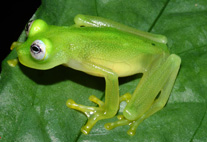Abstract
The violaceus species group (formerly notatus species group) of Campsurus Eaton is revised. All the species in the violaceus group are diagnosed. A new species, C. molinai sp. nov. is described based on male imagos from Bolivia, characterized by their large and sclerotized penes. The violaceus group is proposed to include the following species: C. assimilis Traver, C. truncatus Ulmer (=C. mahunkai Puthz = C. melanocephalus Pereira & da Silva, new synonyms), C. violaceus Needham & Murphy (= C. meyeri Navás = C. notatus Needham & Murphy = C. paranensis Navás, new synonyms), C. emersoni Traver, C. decoloratus (Hagen), and C. molinai sp.nov. Additionally we consider the following species as nomina dubia: C. longicauda Navás, C. pfeifferi Navás, C. zikani Navás, C. albicans (orig. Ephemera albicans Percheron in Guerin & Percheron), C. burmeisteri Ulmer, C. dallasi Navás, C. quadridentatus Eaton, C. claudus Needham & Murphy, C. corumbanus Needham & Murphy, C. dorsalis (Burmeister), C. mutilus Needham & Murphy, and C. striatus Needham & Murphy. Given the results presented herein (five species synonymized and 12 proposed as nomina dubia), only 28 valid species remain in the genus Campsurus. Additionally, the nymphal stages of C. violaceus and C. truncatus are described and illustrated. Female adult genitalia (sockets) and eggs of C. decoloratus are described for the first time. Diagnoses, new country records, and redescriptions of selected characters of the imagos for the species of the violaceus group are given.

